Could magic mushrooms fix your brain? We try Europe’s first legal psychedelic therapy retreat
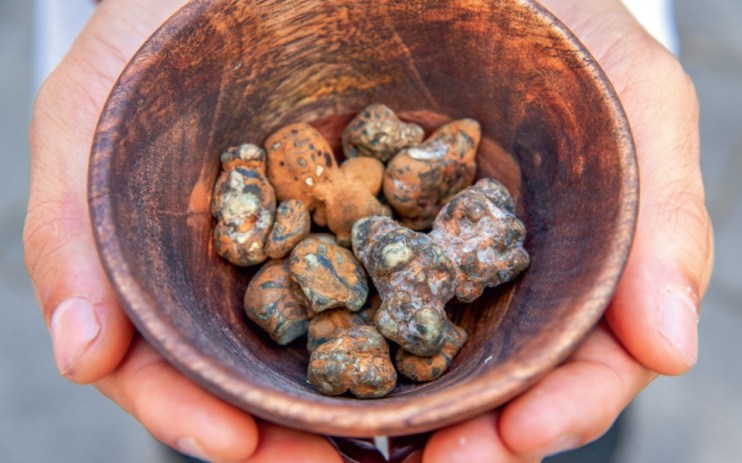
Ten of us sit in a semicircle around a makeshift altar. In front of us lies a small statue of Buddha, various rocks and crystals, some pine cones, a carved mushroom, a small chemists’ weighing scale, and a wooden bowl filled with psychedelic ‘truffles’.
We’re in a lodge on the outskirts of Amsterdam overlooking woodland and a picturesque pond. A tall man called Chi calls us forward one by one, eldest to youngest. First up is Debbie, a sprightly American in her early 50s. She kneels before the truffles – similar in appearance to the ones you might grate over a bowl of pasta, but lacking any discernible smell – weighs pieces on the scale and transfers them into her own, smaller bowl.
Chi performs a short ‘blessing’, asking that the truffle spirit guide Debbie on her journey, and taps her on the head with the wooden mushroom. Nervous like the rest of us, she tips all 20g into her mouth, and is hastily advised to spit it back out. “Take your time,” cautions Chi. “These are living creatures, an intelligent species. Commune with the medicine.”
I want to surrender fully to psilocybin [the active compound in magic mushrooms] intelligence, with no regard to my own life
Mitsuaki Chi
Debbie’s faux-pas is a welcome distraction. People have travelled from all around the world for this moment, and an anxious energy has settled over the room. Our group includes a Brazilian couple in their late 40s, a mother and daughter from New York City and a former US Marine. Two days of meditation, talking circles and ‘sound therapy’ have led towards this moment, when we will consume a bowlful of psychoactive truffles and, with any luck, embark upon a spiritual journey deep into our own subconscious.
When my name is called, I pick out half a dozen walnut-sized chunks and a handful of smaller pieces. Chi taps me on the head with the mushroom and it’s time to eat. I gingerly bite into a piece the size of my thumbnail. It’s nutty, not unpleasant, but is soon met with an intense acidic backwash that lingers at the base of your tongue. I immediately start to feel nauseous. We eat our way through our bowls in silence, alternating mouthfuls of truffle with squares of chocolate to mask the taste.
Then we unroll duvets, slip on blackout goggles (encouraging us to “look within”), lie back, and…
•••
Truffles Therapy is the brainchild of Mitsuaki Chi, a charismatic American in his early 30s who made his money as a semi-professional poker player. He’d hit the casinos at night and spend his days in an existential funk, battling addiction and depression. “Poker was the only way I knew how to earn,” he says, “But it was dirty money.” So he left the city and travelled the well-trodden hippy trail around India, South America and South East Asia. He enrolled at Buddhist monasteries, once spending 16 months on a silent retreat, before making a life-changing discovery: magic mushrooms.
He says his first trip was transformative. He sobbed for hours, and when he woke the next day, he felt like a new man. On the Truffles Therapy website he says his goal is “to surrender fully to psilocybin [the active compound in magic mushrooms] intelligence, with no regard to my own life.”
He started to organise informal ‘retreats’ with friends, during which they would take turns to ‘trip-sit’, providing a safe space for each other to ride out their psychedelic experiences. Around this time he met his partner Leti Passemier, who had been equally unhappy working in a corporate job in Paris. They hit upon the idea for Truffles Therapy, a business combining group therapy, luxury ‘wellbeing’, and psychedelic drugs.
Rarely seen without his magic mushroom hoodie and matching socks, Chi may not look like your traditional entrepreneur, but the business plan is sound. The retreats take place in luxury chalets in countryside around Amsterdam; mine was in a hunting lodge in a village called Beekbergen, an hour’s drive from Schiphol airport.
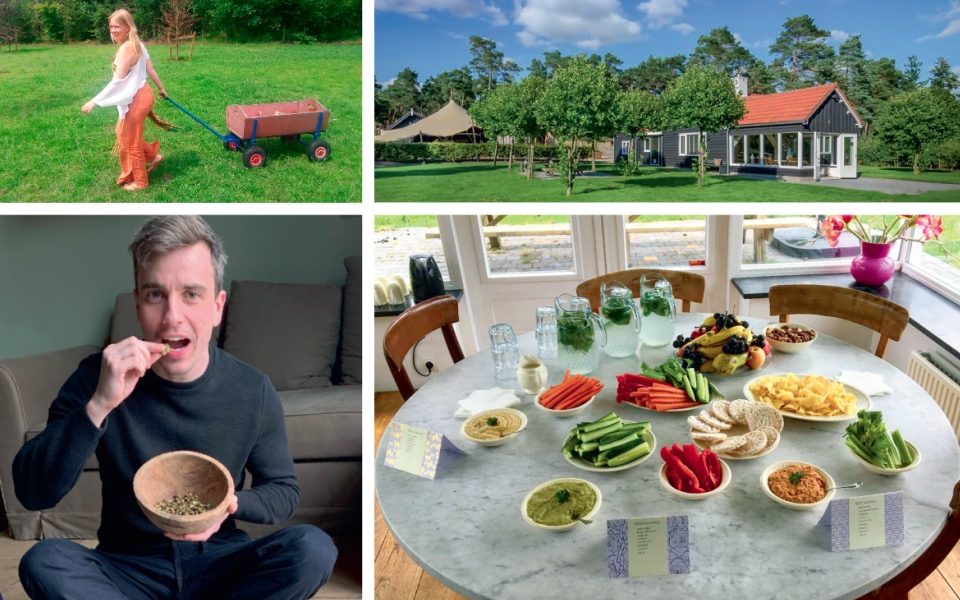
It’s exactly the kind of experience you can imagine bored investment bankers and people who enjoyed Eat Pray Love seeking out for an ‘alternative’ holiday to brag about at dinner parties, although Chi insists his target audience is people seeking genuine spiritual healing (in fairness, if one wanted to simply get high, there are cheaper ways of going about it).
The retreats – which start from €1,200 per person for a group or €5,900 for a private experience – are fully booked for the next six months. The company is expanding fast, advertising for new trip-sitters (there were two first-time members of staff on my retreat) and sounding out overseas investors.
Part of the appeal is that, thanks to a technicality, the business is completely legal. Magic mushrooms were criminalised in Holland in 2008 after a 17-year-old French girl died jumping from one of Amsterdam’s canal bridges (not that the law is enforced; you can still buy them in most of the city’s ‘head shops’). But the law only applies to the parts of the mushroom that grow above ground. The mushroom ‘truffle’, the store of energy that grows beneath the soil, is fair game (there’s debate over whether the ‘oversight’ may have been intentional).
Truffles Therapy has also benefitted from the renewed interest in psychedelic research. Psychedelics were hailed as potential wonder drugs when they were ‘discovered’ in the West in the 1950s and 60s (indigenous peoples across the world have been using them for millennia), but a hyperbolic backlash led to them being banned across most of the world. It wasn’t until the late 90s that scientists began experimenting again, albeit in small pockets.
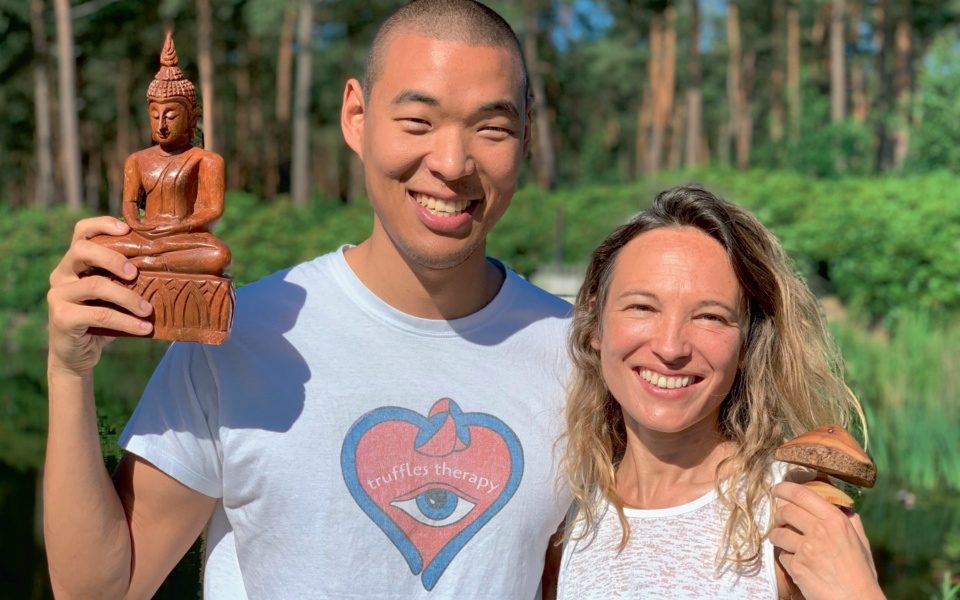
Today there’s a powerful lobby in the US for laws to be relaxed. In April, the world’s first centre for psychedelic research opened at Imperial College London, and psychedelic therapy involving magic mushrooms is expected to be approved in Australia within the next few years. Studies suggest psychedelic experiences can help the terminally ill come to terms with their mortality and may be of use in the treatment of other mental illnesses including depression and anorexia.
High-profile authors including Michael Pollan have also helped to bring psychedelics into the mainstream (everyone on the retreat had read his book, How to Change Your Mind: The New Science of Psychedelics). There’s a near-unanimous consensus among researchers, he argues, that psychedelics are amongst the safest category of drugs. Which is just as well…
•••
A decidedly un-hippyish Mercedes people carrier picked me up from the airport, along with Debbie, a teacher at an international school, and Adrian, a writer from Lisbon. Within 10 minutes we were discussing everything from philosophy to our parents, sharing personal anecdotes I wouldn’t usually dream of telling strangers. Debbie was hoping to gain insight into her relationships with her family. Adrian, a lyrical “spiritual atheist”, wanted to experience “total dissolution of the ego”.
When we pulled into the retreat, we were met by Harry, a young Syrian man who lives in Amsterdam. He was topless and told us the airport had lost his luggage, which was true, although they hadn’t lost his T-shirt; that was more about showing off his abs. Harry is a regular Buddha of Suburbia, speaking almost exclusively in metaphors, as if he’s reading a never-ending fortune cookie, or forever composing a haiku. During one “talking circle” he regaled us with a story about Kintsugi, the centuries-old Japanese art of repairing broken pottery using golden glue, creating something beautiful out of something broken. That’s how he was feeling. I was feeling a bit tired.
Roger, meanwhile, is a former Marine – he has the USMC tattoos to prove it – who arrived wearing a Metallica T-shirt. I liked Roger. He was hoping to work through the fallout from his time in Iraq. Also present were Olivia, a New York City investment banker, and her mum Anna, both of whom had become interested in psychedelics through meditation. Finally there was a Brazilian husband and wife in their late 40s, Marco and Maria, who were taking a much needed holiday from their three children.
The three day retreat is structured around group therapy sessions. After breakfast is yoga, followed by ‘sound healing’ (a bit like guided meditation but with soothing instruments). Later there are talking circles on the lawn – apparently some groups discuss deep-seated traumas, but we kept it relatively light. During down-time we swam in the pond and took dips in the log-fired hot tub.
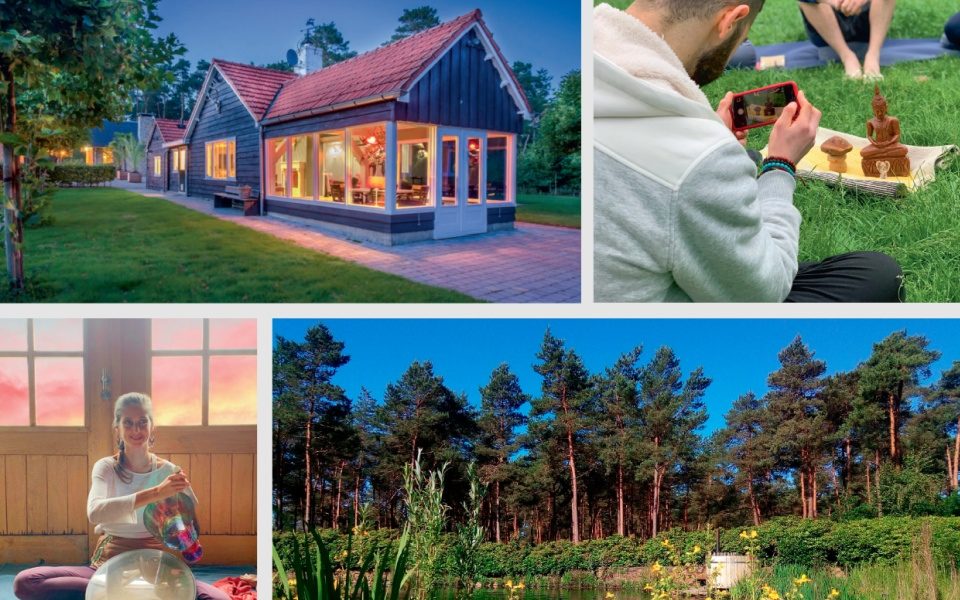
You’re provided with as much home-made vegetarian food as you can eat, as much green tea as you can drink, and accommodation in a private or shared room. You won’t be provided with coffee or alcohol, which are both prohibited, as are cigarettes and “sexual contact” with other guests.
On the first morning, with a caffeine-withdrawal headache throbbing behind my temples, we microdosed some truffles. This is an increasingly popular practice among Silicon Valley types, involving taking small amounts of psychoactive drugs every other day. People claim it brings out their creativity, although I suspect it’s just an acceptable way of getting high at work. It made me feel groggy and stoned. During a silent, post-microdose walk in the woods I caught myself marvelling at drops of dew and picking flowers. A few hours later, it was time for the main event.
•••
Lying in the central hall in my day-bed, duvet pulled up, goggles on, the taste of rotten walnuts in my mouth, I waited for the journey to begin. And… nothing. Minutes passed. The butterflies in my stomach got bored and fluttered away. After an hour Chi offered everyone a second bowl, which I struggled through. Still nothing.
Around me the room was growing restless. Maria began to giggle uncontrollably. She set off Marco, who spent the next few hours cackling like a drain, occasionally doubling up from the pain of his hysterical laughter. Someone to my left joined in, howling and then apologising in turn, over and over. I took off my mask to reassure him; we made eye-contact but he was elsewhere, on some other hilarious plane of existence. Behind me a woman began to sob uncontrollably, filling the room with big, tearful heaves of sorrow. It was surreal, somewhere between a slumber party, an opium den and a Victorian insane asylum.
Time passed slowly, and then seemed to speed up. The sun streaked across the sky. One minute it was light, the next I could see the moon and the room was full of candles. It looked like a cathedral, I thought.
I began to feel intensely jealous of everyone else. I wanted to laugh or cry or… something. Chi came over with a third bowl, which I ate without much hope. I must have gone through almost 50g of truffles, which seemed like a lot. My stomach churned.
I took my mask off and surveyed at the scene; Roger was scribbling incomprehensible hieroglyphics into a notebook; Harry was silhouetted against the window in a statuesque yoga pose; Marco was still gasping for breath in the midst of his laughing fit. I resigned myself to a nap, and tumbled into an uneasy, feverish dream.
Time passed slowly, and then seemed to speed up. The sun streaked across the sky. One minute it was light, the next I could see the moon and the room was full of candles. It looked like a cathedral, I thought. I dozed off again. Hovering between wake and sleep, I found myself dwelling on arguments I’d had with my girlfriend. At one point I felt an intense regret at not phoning my mother more. Was this the trip? I went to the bathroom and the colours looked off. Too bright. Back in bed, I squirmed uncomfortably, both too hot and too cold. When I next woke it was gone 1am and the room was empty save for Adrian, quietly chuckling to himself.
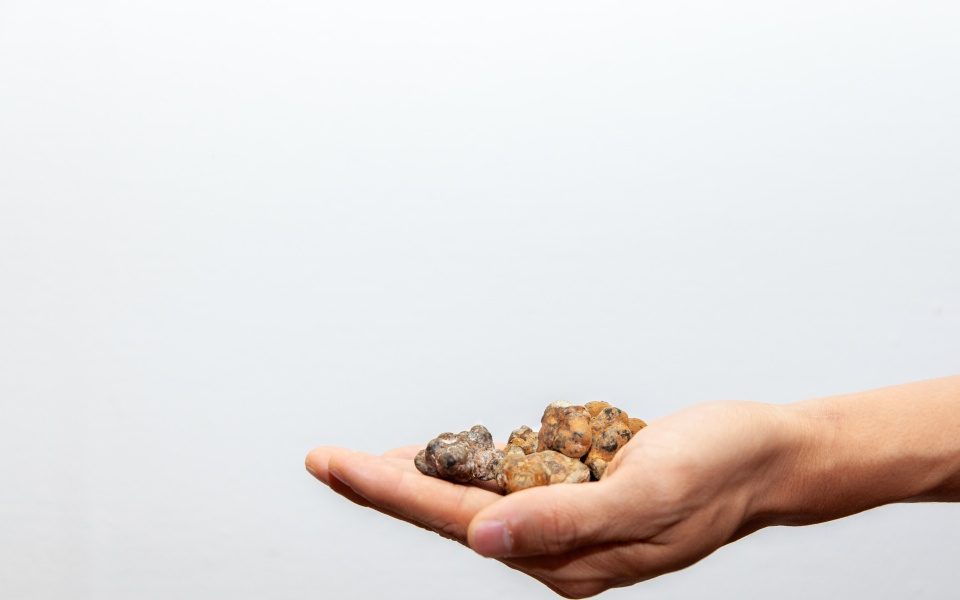
The next morning, everyone looked a little sheepish. Over bowls of granola we discussed our trips. Adrian was euphoric, babbling about “ego manifestation of the divine self” and his communion with relatives both living and dead. Roger described an intense rush of creativity, although he couldn’t translate any of his notes, which appeared to be written in fragments of three different languages.
Harry felt an overpowering cosmic love for everything and described that feeling in great detail over what felt like a lifetime. Marco, who seemed to be having fun, was annoyed that he’d spent his long, dark journey into the soul giggling like a school-girl. Only Anna had an outright bad trip, unable to stop crying for reasons she couldn’t quite fathom.
And me? I felt pretty good. My journey hadn’t yielded any revelations. My ego remained intact. But I felt light, refreshed, pleased to be sitting in another circle with this strange, endearingly dysfunctional bunch of people.
There are aspects of Truffles Therapy I dislike. The propensity to wrap everything in New Age language triggers my gag reflex – I’ve never met so many people who felt “blessed” to be somewhere – and I feel uncomfortable with the cherry-picking of beliefs from different cultures: a dash of Ayurvedic medicine, a sprinkling of eastern mysticism, a liberal serving of South American shamanism (this is, I admit, mitigated by the fact everyone is so nice).
Our post-trip WhatsApp group is filled with messages about lowered anxiety levels and improvements in mood. I suspect a healthy dose of confirmation bias, but I can see the therapeutic potential of psychedelics, even if I’d rather experience them in a more scientific setting. Personally, any benefits I felt were thoroughly squashed after a few days back at work. I have, however, been calling my mother more often.
• Retreats at Truffles Therapy start from €1,200; For more information and to book
go to trufflestherapy.com
